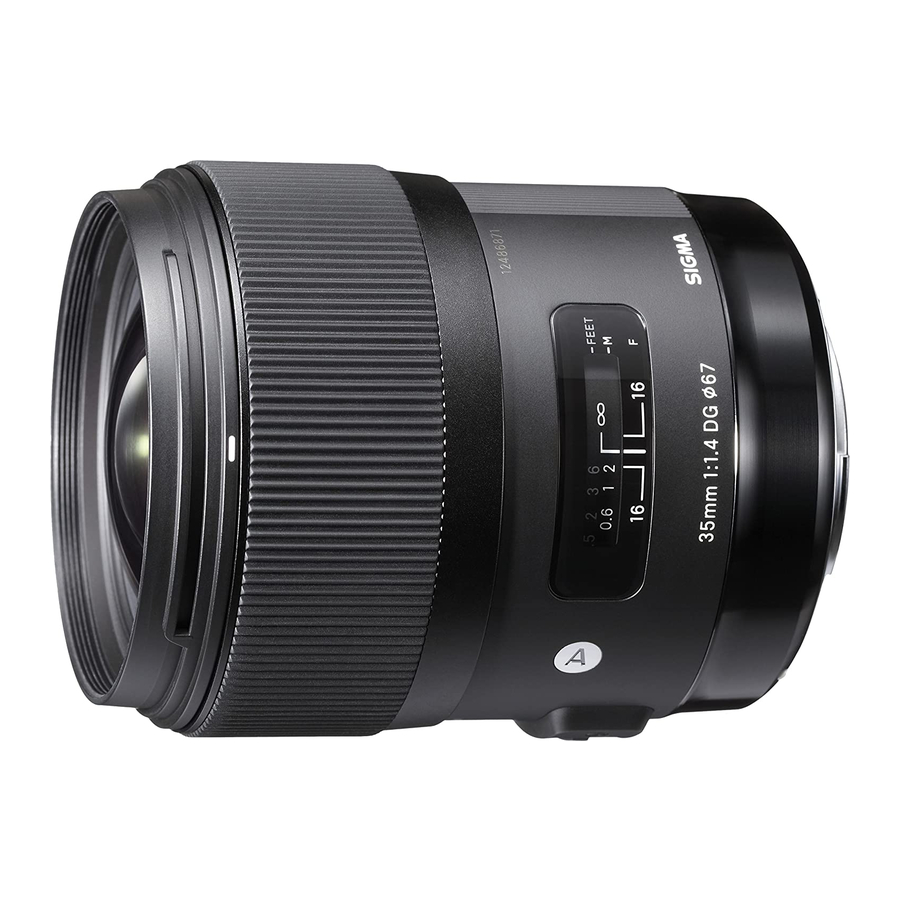
Table of Contents
Advertisement
Quick Links
Lens Compatibility with Digital SLR Cameras
CAN 35MM SLR LENSES BE USED ON DIGITAL CAMERAS?
In most cases, the answer is yes. If you have a lens for a fairly recent 35mm SLR camera, it can be used on a
new digital SLR from the same maker. (See the information below under the various camera brands for specific
details about using existing lenses on new cameras.) If the 35mm camera lens produces good, sharp, contrasty
images on film, it will produce good digital photos, too. One big difference is the angle of view. The imaging sen-
sor in most digital cameras is smaller than 35mm film, measuring about 23 x 16mm. Therefore, wide-angle lens-
es for 35mm camera are not as wide when used on a digital camera, but telephoto lenses are stronger. With
35mm cameras, a 50mm lens is the "normal" focal length that gives you about the same view as the human
eye. Below 50mm, the view gets wider, above 50mm it becomes telephoto and draws the subject in closer. For
digital cameras, this "normal" focal length is about 32mm, so an old 50mm lens from your 35mm camera will be
a short telephoto (equal to 80mm) when used on a digital. An 18-200mm zoom lens for a digital camera has
about the same wide coverage and telephoto magnifying power as a 28-300mm lens on a 35mm camera. To
convert the equivalent view of a 35mm lens when used on a digital camera, multiply by 1.6X.
A few high-end digital cameras, such as the Canon EOS 1Ds and EOS 5D have full-frame sensors. Since these
sensors match the 24mm x 36mm size of 35mm film, there is no conversion factor when they are used with
35mm lenses.
LENS CONVERSION FOR VARIOUS CAMERA FORMATS
Extreme Wide
97 degrees AOV
Digital SLR
(1.6X factor)
35mm Film
6x6cm Film
AOV = angle of view
DIGITAL-ONLY LENSES
Since the future of SLR photography is digital and since most digital cameras have sensors that are smaller
than 35mm film, manufacturers are making digital-only lenses. The primary difference is the reduced area of
coverage provided by digital-only lenses. These lenses have the same mounting style as 35mm format lenses
and they can be mounted on 35mm camera bodies (except Canon EF-S lenses), but they will not cover the full
image size. This causes vignetting around the edges of the 35mm image, especially at the widest end of the
lens zoom range.
Wide Angle
75 degrees AOV
12mm
18mm
19mm
28mm
40mm
50mm
(88 deg.)
6x6cm = 2-1/4 x 2-1/4" format on 120 film
Normal
Short Tele
46 degrees AOV
27 degrees AOV
32mm
56mm
50mm
90mm
80mm
150mm
(30 deg.)
Moderate Tele
12 degrees AOV
128mm
200mm
350mm
(13 deg.)
Advertisement
Table of Contents

Subscribe to Our Youtube Channel
Summary of Contents for Sigma CAN 35MM
- Page 1 SLR from the same maker. (See the information below under the various camera brands for specific details about using existing lenses on new cameras.) If the 35mm camera lens produces good, sharp, contrasty images on film, it will produce good digital photos, too. One big difference is the angle of view. The imaging sen- sor in most digital cameras is smaller than 35mm film, measuring about 23 x 16mm.
- Page 2 The surface of a CCD or CMOS sensor in a camera is shinier than film emulsion, so there can be more light rays reflecting off the sensor, back thru the lens. Digital-only lenses have more extensive coatings on the back sides of the lens elements to absorb this stray light and preserve image contrast.
- Page 3 SIGMA Sigma makes several lines of lenses, with DC format lenses their digital-only line. Sigma’s DG lenses are opti- mized for better performance with digital cameras, but will work fine with 35mm cameras and will cover the full image size.















Need help?
Do you have a question about the CAN 35MM and is the answer not in the manual?
Questions and answers